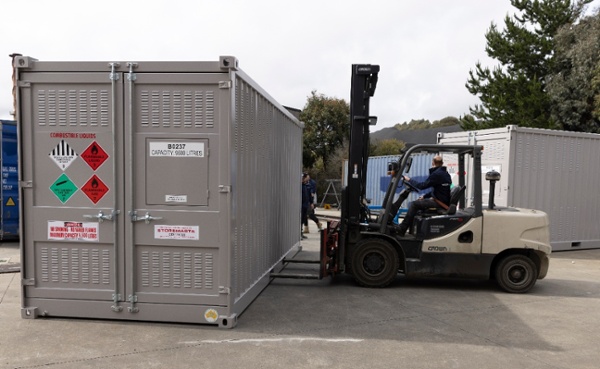Hazardous chemicals are mixtures or substances that present a significant risk to health and safety. Therefore, when handling, storing and managing your hazardous chemicals, you must develop a risk management plan that controls the chemical hazards at your site.
This post offers a comprehensive guide to managing risks of hazardous substances, and includes information on:
- Compliance obligations including WHS laws and Codes of Practice
- Developing a hazardous chemical management plan:
- Identifying hazardous chemicals
- Assessing risk in your workplace
- Controlling chemical risk
- Sustaining effective controls
What Hazards Do Harmful Chemicals Pose?
Chemicals can be both physical hazards as well as health hazards and in Australia are classified by an internationally recognised system that sorts their physical and chemical properties into hazard classes. If you carry any chemicals at your worksite, you have a legal responsibility to ensure they are correctly identified and labelled within their hazard class, then handled and stored according to Australian WHS laws and the practical requirements set out by the Australian Standards.
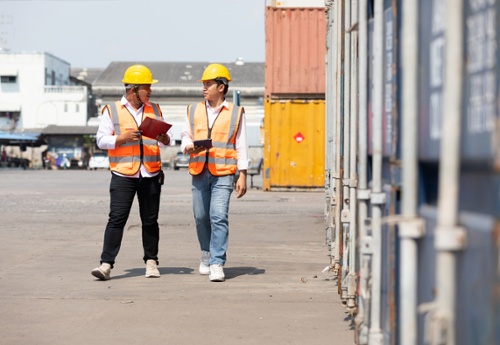
Most workplaces carry multiple hazardous chemicals which must be identified, assessed and controlled to maintain safety.
Chemical Compliance Obligations
To meet your chemical compliance obligations, you’ll need to follow all the requirements of the relevant Code of Practice.
For workplaces with hazardous chemicals, Safe Work Australia has produced the Model Code Of Practice Managing Risks of Hazardous Chemicals in the Workplace (otherwise known as the HAZCHEM Code).
Think of the Code as a guide to helping you understand the full extent of your compliance responsibilities; it won’t tell you what to do, but it will show you how.
In the next sections of our post, we’ll be explaining how you can:
- Correctly identify and label all the substances at your job site
- Research the known chemical health hazards and physio-chemical hazards in your industry and where they might be present on your own job site
- Keep airborne concentration levels within official Workplace Exposure Standards
- Implement a risk management methodology to manage and control all the chemical hazards at your worksite (including waste materials and chemicals generated during work processes).
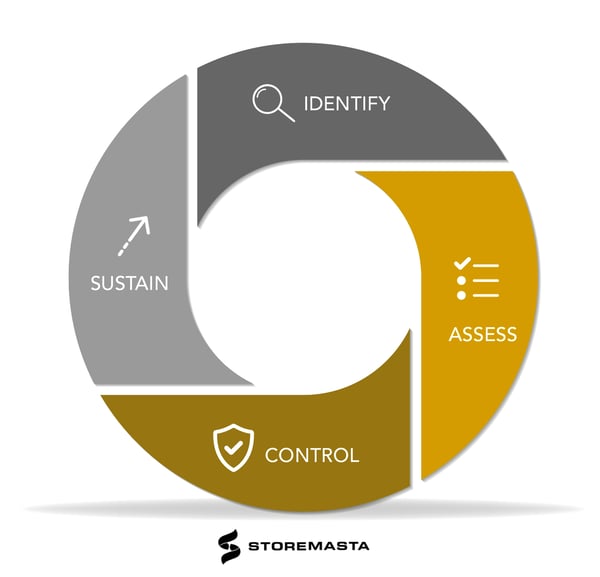
REMEMBER: To ensure your workplace is chemical safety compliant, you first require an understanding of the hazards that are present, as well as the requirements and regulations of WHS. By utilising the HAZCHEM Code, you’ll get a better idea of how to get started or identify gaps in your existing chemical management plan.
What are Hazardous Chemicals?
So, what are hazardous chemicals — and why are they dangerous?
Chemical safety compliance requires a solid understanding of all the materials and substances you carry at the workplace. Some of them will be hazardous chemicals, other may also be Dangerous Goods. Do you know how to tell the difference — or even determine if a substance is harmful?
Use Section 1: Introduction in the HAZCHECM Code to learn what is required to manage the risks created by hazardous chemicals. You’ll take a deep dive into chemical hazards, looking at ways the physical and chemical properties of the substances you carry at your worksite could make people sick, destroy your buildings and property, or irreversibly damage the environment.
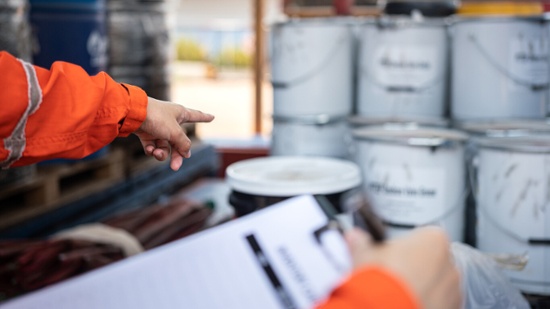
Referring to the Code of Practice, Managing Risks of Hazardous Chemicals in the Workplace, you can learn how to identify hazardous chemicals and manage the subsequent risks.
Obligations with Chemical Safety
At the same time get a full understanding of your legal obligations and the different people at the workplace who are responsible for chemical safety.
To meet your obligations, you are going to need to know how to:
- Use the international system for classifying chemicals and their hazards (also known as the GHS)
- Distinguish between hazardous chemicals and dangerous goods
- Identify any hazardous chemicals at your job site that are prohibited or have restrictions on their use
- Understand workplace exposure standards and keep airborne concentration levels within an acceptable range
- Preparing a REGISTER and MANIFEST of Hazardous Chemicals
- Involve your workers, contractors, suppliers, and industry experts in chemical safety processes
It’s important to remember that every single person at the worksite (including workers, contractors, managers, CEOs, visitors, admin staff, and even suppliers) play a role in chemical safety.
When people understand and follow their WHS responsibilities, the likelihood of chemical accidents and injuries is greatly reduced. From properly securing lids on chemical containers to cleaning out the spill sump in chemical storage cabinets, it takes the cooperation of your staff and contractors to achieve chemical safety compliance in the workplace.
REMEMBER: Every workplace is different — and the actions required to fully manage the risks of hazardous chemicals may require you to conduct your own independent research, carry out a full risk assessment, and engage the services of a Dangerous Goods Consultant or an occupational hygienist.
Identifying Hazards
Identifying chemical hazards is arguably the most important step in your risk management plan.
Like to learn more about chemical identification?
Hazard identification is the first step in the risk management process and the HAZECHEM Code dedicates a whole section to identifying hazards. Identifying a chemical hazard can be as simple as looking at the label on a bottle of methylated spirits, but many hazards are not that obvious and require research or the assistance of professional safety consultants.
To fully meet your chemical compliance responsibilities, you must ensure that every chemical hazard is identified. Does your workplace have the mechanisms in place to ensure that nothing is missed?
Do you (and the key operators at the job site) know how to:
- Use Safety Data Sheets (SDSs) to locate critical information about the chemicals you use.
- Identify hazardous chemicals generated during work processes — things like diesel exhaust, fuel emissions, sewerage, toxic waste, welding fume, and wood dust?
- Correctly label chemical containers and display mandatory placards/signs in chemical stores or other handling areas at the workplace?
- Safely deal with a chemical container that has a missing or unreadable label and you are unclear about contents of the container?
- Use workplace documents — incident reports, meeting minutes, and safety records — to identify chemical hazards that may have been missed during the last risk assessment?
REMEMBER: Identifying chemical hazards is so important that we especially recommend seeking a wider range of research materials including the advice and assistance of Dangerous Goods experts, Regulators, and industry associations.
The Hazardous Chemical Risk Assessment Process
Do you need to carry out a risk assessment on the hazardous chemicals at your workplace?
A chemical risk assessment is an examination of the hazardous chemicals carried at your workplace and assessing how they could cause harm.
The risk assessment process takes your long list of chemical hazards and turns it into meaningful data by assessing:
- Who could be harmed by the chemicals (people, property, environment.)
- How they could be harmed (acid burns, fire, harmful emissions.)
- The severity of any accidents, incidents, or illnesses (death or workers, destruction of buildings, harmful toxin levels recorded in agricultural soil and livestock.)
- The likelihood of these dangerous events, illnesses, or injuries actually happening (every day, once a month when the chemicals are delivered, during a cyclone.)
Risk assessments do not have to be over complicated and focus on determining the severity of a hazard and how urgently action needs to be taken.
Critical Questions to Ask During Chemical Risk Assessment
Section 3 of the HAZCHEM Code walks you through the risk assessment process by focusing on five critical questions.
1. Do You Need To Conduct A Risk Assessment?
Risk assessments are not compulsory under Australian safety legislation and are not required if the chemical hazard must be controlled according to legislation or a Code or Practice. But unless your workplace is small and only carries a very small amount of chemicals, we feel that a risk assessment is essential.
A chemical risk assessment must be carried out if there is any uncertainty about how a chemical hazard could cause injuries, death, illness, or property damage. You’ll have to conduct a risk assessment if the chemical has an airborne exposure standard (details will be in the Safety Data Sheet for the chemical).
2. Who Is Going To Conduct Your Risk Assessment?
Once you have determined you need a risk assessment, you’ll then need to decide who is going to do it. Are you going to assign the responsibility to a single manager or to an established chemical safety committee? You may also choose to involve independent auditors or Dangerous Goods specialists. But your decision will be based on whether the team has (at a minimum):
- An understanding of the WHS legislative framework in Australia
- A working knowledge of the chemicals on the job site
- An understanding of the way workplace operations, chemicals stores, and the physical features of a job site can impact chemical hazards
- The skills and resources to research known chemical hazards
- Communication skills that enable discussion and information sharing
- Writing and presentation skills to present an accurate assessment to decision makers
/how%20to%20assess%20chemical%20hazards%20in%20the%20workplace-600x300.jpg?width=600&height=300&name=how%20to%20assess%20chemical%20hazards%20in%20the%20workplace-600x300.jpg)
Consider who is qualified to conduct your chemical risk assessment.
3. What Type Of Risk Assessment Should You Use?
Conducting a risk assessment on all the hazardous chemicals used, stored, handled, and generated at your workplace can seem like an overwhelming task — especially if your work site carries a complex mix of flammables, explosives, and reactive substances.
Do you know how to break down your risk assessments into smaller, more manageable segments so you don’t over complicate the process?
Apart from dividing up the workplace and concentrating on different work areas or chemical groups, you also need to decide whether you need a basic assessment; a generic assessment; or a detailed risk assessment.
Always remember that a detailed assessment will be required if there is any uncertainty about the level of risk and how the chemicals could be affecting the health of your workers, property, or the environment.
4. How Will You Assess Chemical Health Hazards?
When assessing chemical health hazards, the main consideration is understanding the different situations where people could come into contact with the chemicals.
You need to identify which of your workers is potentially at risk (plus other contractors, visitors or customers) and the extent of the exposure.
To adequately assess the exposure risks to your workers you may need to undertake chemical exposure testing. Hundreds of hazardous chemicals have a Workplace Exposure Standard set by Safe Work Australia. If your workplace carries any of these chemicals, you must ensure that the air quality stays within the limits defined by the Standards.
REMEMBER: When chemicals are a health hazard, they are often toxic to animals, plants, fish, and the environment. You’ll also need to consider this in your risk assessment.
5. How Will Physical Risks Like Fires And Explosions Be Assessed?
Chemical health hazards are primarily assessed on how they will impact human workers, but physical hazards are assessed on how they are impacted by other materials, operating procedures, and ignition sources.
If a chemical can burn (or support a fire), explode, or react dangerously you’ll need to know how to:
- Identify anything that could ignite a fire or cause the chemical to react dangerously.
- Assess external factors (eg, activities on adjacent properties, weather systems) and how they could impact the chemicals.
- Evaluate work processes, housekeeping procedures, and chemical storage practices, considering how they could increase the risk of fires or explosions.
REMEMBER: Physical hazards are more than fires and explosions. Your risk assessment must also look at things like corrosion, deterioration of containers and storage equipment, chemicals in confined spaces, asphyxiation hazards, use of compressed gases.
Controlling Risks: Managing Hazardous Chemicals
A control measure is an action you take to eliminate a chemical hazard from the workplace — or reduce the harm it could cause and bring it to an acceptable level.
Having workers wear chemical goggles when decanting fuel, or storing your flammable liquids in a dedicated chemical store are both examples of control measures that can make working with hazardous chemical much safer.
When managing the risk of hazardous chemicals, you can use the Hierarchy of Control to eliminate or minimise the chemical hazards at your worksite.
Under Australian WHS Regulations you must control chemical hazards according to the Hierarchy of Control. The Hierarchy of Control is a way of ranking risk control measures — from the most reliable and effective level of protection — to the least.
The whole of Section 4 in the HAZCHEM Code is dedicated to the Hierarchy of Control. This information will help you gain a holistic understanding of the hierarchy, so you can implement chemical control measures at your own workplace.
We strongly recommend working through each of the following four sections.
1. Understanding the Hierarchy of Control
For each chemical hazard at the job site, you should consider control measures from all six groupings in the Hierarchy of Control.
They steps in the Hierarchy of Control should be considered in the following order of importance:
- Elimination — Control measures that enable you to stop using a hazardous chemical and completely eliminate a work process. Eg, buying premixed chemicals is a common ‘elimination’ method.
- Substitution — These are controls that replace a hazardous substance with another less harmful chemical or procedure. Eg, change from dry sweeping to wet sweeping which reduces the amount of dust and air-borne particles in the breathing zone of workers.
- Isolation — These controls separate the chemicals from your workers. Eg, using ‘glove boxes’ is a common isolation control used in laboratories.
- Engineering — Controlling hazards using chemical storage equipment, mechanical devices, machinery, or changes to workplace design. Eg, having workers move gas cylinders about the warehouse with a gas bottle trolley is an engineering control required by Australian Safety Standards.
- Administration — These controls are the systems and safe working procedures implemented by managers and followed by your staff, workers and contractors. Eg, a site safety induction for visitors and contractors is an example of administrative control.
- Personal Protective Equipment — PPE is the least effective of the control measures because it only places a temporary barrier between workers and chemicals. PPE should never be introduced a sole control measure. Eg, having staff wear gloves with thermal protection is a known PPE control measure when changing LPG cylinders on forklifts.
Your focus should always be on completely removing the chemical from the worksite wherever possible and if the chemical hazard cannot be eliminated, you may need to implement more than one control measure.
Implementing compliant chemical storage is a key control for hazardous chemical management.
2. Implementing Specific Control Measures
Some chemicals have known control measures that are required under WHS legislation, Codes of Practice, or Australian Standards. These will include how hazardous chemicals stored and handled are managed in the workplace.
Your chemical management procedure will encompass a range of controls from ensuring you meet the workplace exposure standards for airborne contaminants to how to actively control the physical or chemical properties of your substances.
Controls may include compliant chemical storage, chemical handling equipment, suitable decanting procedures, administrative controls and better management of hazardous chemicals in the workplace, in relation to selection of products, storage of products, handling of substances and the stocking of hazardous chemicals.
Sometimes these control measures are stated on product labels and SDS in the form of Hazard Statements, but you should always conduct your own research.
You can learn more by accessing information from:
- Suppliers and Industry specialists
- WHS Regulations and legislation in your state or territory
- Hazardous Chemical Information System (HCIS) on the Safe Work Australia website
- The HAZCHEM Code’s suggested control measures
3. Maintaining Control Measures
Once you’ve implemented hazard control measures, how are you going to ensure they remain effective?
Workplaces change, and therefore, require ongoing chemical management.
Your workplace may unintentionally create new chemical hazards when circumstances change, such as:
- New staff or contractors onsite
- Ordering new types of hazardous chemicals
- Stocking different quantities of dangerous goods or hazardous substances
- Developing new tasks or job procedures
- Installation of new equipment or devices
- Deterioration of old controls
- Change in environmental conditions
To continually control risk, we recommend conducting another chemical assessment to ensure that every control is being used correctly – and that no new hazards have been introduced.
You’ll also want to consider conducting:
- Daily shift-change inspections
- Periodic chemical safety audits
- Preventative maintenance and integrity testing in your chemical stores
- Review training with your managers, supervisors, workers, and contractors
The best way to effectively maintain the control measures you’ve introduced is to use a tested risk management methodology that operates in a circular fashion. We suggest using the Storemasta methodology IDENTIFY - ASSESS - CONTROL – SUSTAIN, because it has four steps which continue to repeat until every chemical hazard has been addressed.
Our methodology helps you introduce systems to respond to new chemical hazards identified during a safety audit or take remedial action if an engineering control or working procedure is not working.
The development of diligent monitoring and reviewing systems to sustain chemical compliance allows your organisation to manage risk in a cyclical manner — through the regular monitoring and reviewing of your site to ensure optimum safety. We recommend a regular review of your controls, as well as the potential monitoring the health of your workers.
4. Ensuring Staff Adopt The Control Measures
One of the most common faults we identify during the safety audits we conduct for clients, are chemicals stores and handling stations that have become high risk areas simply due to poor housekeeping. Chemical control measures just don’t work unless they are accepted and understood by everyone effected, then enforced by managers and supervisors.
Training and supervising your staff is an essential part of risk management, and also required by the law. Are you aware that if any of your workers or contractors are likely to be exposed to a hazardous chemical you must provide adequate supervision and training. Hefty penalties of up to $30,000 apply.
Health Monitoring
Do you need to monitor the health of your workers?
A key risk of hazardous chemicals is the impact these substances have on the health and safety of staff. Therefore, to understand the health and safety risks - as well as how to properly control them - is a top priority for any organisation that will handle or store hazardous chemicals.
Health monitoring may be required if your people are at risk of illness or harm due to the use of hazardous chemicals in the workplace.
To monitor the health of a worker you will be carrying out medical tests on high risk individuals. These tests are to identify any changes in their health status that have occurred because of exposure to hazardous chemicals while at work.
Health monitoring involves the collection of data to measure the degree of exposure or evaluate whether or not the absorbed dose is actually safe. Section 5 of the HAZCHEM Code walks you through steps involved in health monitoring.
Emergency Preparedness with Hazardous Chemicals
Would your staff know what to do in a fire, explosion or chemical emergency?
Chemical compliance also requires a commitment to emergency preparedness and the development of a compliant Emergency Plan. If your workplace carries larger quantities of hazardous chemicals or Dangerous Goods you’ll have additional responsibilities and may need to lodge your Emergency Plan with emergency service providers or consult with neighbouring property owners.
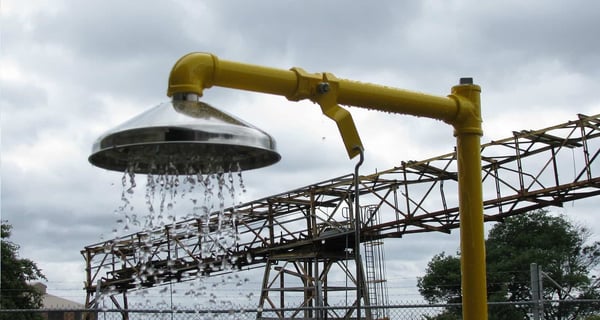
Emergency decontamination equipment, such as a safety shower and/or eyewash facility may be required for your hazardous chemicals.
Emergency preparedness also involves installing and maintaining:
- Emergency and safety equipment (eg, eyewash stations).
- Fire protection systems (eg, automatic sprinkler systems).
- Monitors and alarms (eg, chemical detection alarms).
- Reliable water supply (eg, consistent, safe pressure for eyewash stations)
Emergency plans, safety equipment, and chemical stores are almost useless if no-one knows where they are, or how to use them correctly. And don’t let your chemical safety and storage equipment fall into disrepair. Conduct regular refresher training, emergency drills, and site inspections while maintaining a clean and well-supervised worksite. Chemical emergencies can happen on any shift, on any day. Be ready.
Managing Hazardous Chemicals To Ensure Health and Safety
Thanks for reading our post on hazardous chemical management. Chemical compliance is a circular cycle that continues after your controls have been implemented.
To achieve safety and compliance in your workplace, you must ensure that you’re committing to identifying, assessing, controlling and sustaining safety measures that are appropriate and effective for your workplace.
To learn more, you can access your free copy of our eBook that focuses on the management of chemical hazards. Whether your workplace holds a few drums of flammable liquid or thousands of litres of various hazardous chemicals and dangerous goods, our systematic approach to risk management will help you protect your people, property and environment. Get your copy now to take the next step in the chemical compliance process.
Joining the team as a Dangerous Goods Storage Consultant, Melissa Hampton became Storemasta's Marketing Manager in late 2021. With extensive knowledge and experience in chemical compliance, Melissa is responsible for leading the Marketing team and helping shape their marketing strategy. In her spare time, you can find Melissa hiking, swimming and enjoying the great outdoors in beautiful north-west Tasmania.
